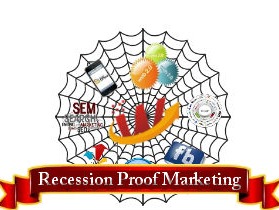
Unlocking the Secrets of X Premium: Is It Worth the Dime?
In the ever-evolving landscape of social media, X (formerly Twitter) is making waves with its new X Premium offering, designed to coax more users into paying for enhanced experiences. While the notion of paying for what people typically receive for free (like tweeting and scrolling) seems a tad surreal, the recent analysis from Buffer reveals that the benefits of the X Premium subscription may indeed warrant a closer look, especially for brands keen on amplifying their reach.
How Significant Are the Reach Benefits?
According to Buffer's analysis, which meticulously examined over 18.8 million posts from 71,000 accounts, X Premium subscribers enjoy an astonishing average reach of 10 times more compared to their non-paying counterparts. This insight presents a compelling case for brands seeking to maximize visibility in a crowded digital marketplace where standing out is a constant challenge.
Imagine harnessing the power of X Premium: that coveted edge could mean transforming a simple tweet into a viral sensation. Businesses and marketers taking advantage of this premium experience and its affiliate features, like post boosting and prioritized visibility in replies, can potentially tap into a broader audience, driving engagement like never before.
Is It Just a Trend or a Long-Term Strategy?
However, every trend comes with its pitfalls. Interestingly, while the amplification of reach is significant, the metrics suggest a decline in effectiveness over time, which could hint at the dynamic nature of social media algorithms. As thousands of brands flock to X Premium, the novelty might wear off, leading to an overcrowded arena where extra investment could yield diminishing returns.
Analyzing the Price Points: What You Get for Your Buck
The X Premium subscription plans range from $3 per month for Basic users to $40 for Premium+. As one might expect, the higher tiers correlate with greater visibility, with Premium accounts garnering about 600 impressions per post, while Premium+ accounts surpass that with an average of 1,550 impressions. It's essential to assess how much these impressions translate into actual engagement and, ultimately, revenue for your business.
If you’re contemplating whether to upgrade your plan, think about it like this: the Basic X Premium option offers nearly 100 impressions per post, which while respectable, might not cut it for brands looking to leave a mark in a hyper-competitive environment. The value of investing in premium social media marketing hinges on prioritizing visibility and engagement while staying budget-conscious.
Why Does This Matter for Brands?
Still, for the broader audience – a staggering 80% of X users frequently browse without posting – the focus on premium offerings may seem misaligned. Yet, this narrative becomes relevant when we look at it from a business standpoint. If brands can utilize X's paid features correctly, it could lead to extraordinary outreach and engagement, ultimately enhancing brand awareness and loyalty.
Future Trends in Subscription-Based Social Media Models
What does this mean for the future of social media marketing? As more platforms potentially adopt subscription models, brands will need to evaluate the ROI of premium features across the board. Will the additional costs of subscription yield profitable returns through heightened engagement and expanded market reach? Only through strategic planning, creative content, and smart implementations can marketers answer that question.
Conclusion: Worth It or Not?
In the fast-paced world of social media marketing, understanding the nuances of subscription models and their direct benefits will give brands an upper hand for effective strategies. The court is still out on whether X Premium is a sustainable long-term investment for all users, but the data indicates a clear path for brands willing to explore new horizons. So, are you ready to take your social media game to new heights? Consider weighing the benefits of your investment in the X Premium subscription and devise a strategy that maximizes your reach!
 Add Row
Add Row  Add
Add 




Write A Comment